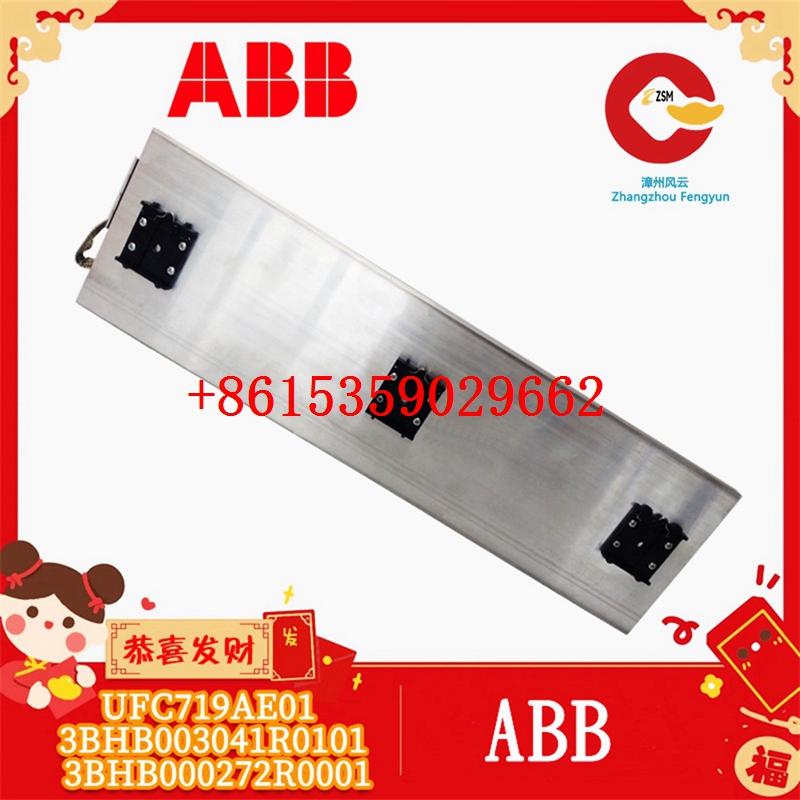Technical Parameters Introduction of ABB HIEE200130R0002 AF C094 AE02 ARCnet Control Panel Display

1. General Overview
The ABB HIEE200130R0002 AF C094 AE02 ARCnet Control Panel Display is a critical component in ABB’s automation and control systems, designed to provide a user – friendly interface for operators to monitor and control industrial processes. It serves as a bridge between the complex underlying control systems and the human operators, enabling efficient operation and management of various industrial facilities.
2. Display Characteristics
- Display Type: Typically, it utilizes a high – quality LCD (Liquid Crystal Display) panel. This type of display offers excellent clarity, high contrast, and wide viewing angles, ensuring that operators can easily read the displayed information from different positions within the control room.
- Resolution: The display has a specific resolution, for example, [X] x [Y] pixels (the actual resolution may vary depending on the exact model and specifications). A higher resolution allows for the display of more detailed information, such as complex process diagrams, trend graphs, and alarm lists, without compromising readability.
- Screen Size: It comes in a standard screen size, often measured in inches diagonally. A suitable screen size ensures that all the necessary information can be presented clearly on the display, while still fitting well within the control panel’s design.
3. Communication Interface
- ARCnet Support: As indicated by its name, the display supports the ARCnet (Automation and Remote Control Network) communication protocol. ARCnet is a proprietary network technology developed by ABB for industrial automation applications. It enables reliable and high – speed data communication between the control panel display and other devices in the automation system, such as PLCs (Programmable Logic Controllers), sensors, and actuators.
- Other Communication Options (if applicable): Depending on the specific configuration, it may also support other common communication protocols like Modbus, Profibus, or Ethernet – based protocols. This flexibility in communication options allows for seamless integration with a wide range of industrial automation equipment from different manufacturers.
4. User Interface Features
- Intuitive Menu System: The display is equipped with an intuitive menu system that allows operators to navigate through different functions and settings easily. The menus are organized in a logical manner, with clear icons and text labels, making it simple for operators to access the information they need and perform various control operations.
- Alarm Management: It provides comprehensive alarm management capabilities. Alarms can be displayed prominently on the screen, along with detailed information about the alarm condition, such as the alarm source, severity level, and time of occurrence. Operators can acknowledge, silence, and reset alarms directly from the display, ensuring timely response to abnormal situations in the industrial process.
- Trend Graphs and Historical Data: The display can display trend graphs of process variables over time, allowing operators to monitor the performance of the industrial process and identify any trends or anomalies. It may also store historical data, which can be retrieved and analyzed later for process optimization and troubleshooting purposes.
5. Environmental and Physical Specifications
- Operating Temperature Range: The control panel display is designed to operate in a wide range of industrial temperatures, typically from – 20°C to + 60°C (may vary slightly depending on the specific model and enclosure type). This ensures reliable performance in harsh industrial environments, such as factories, power plants, and oil refineries.
- Protection Class: It usually has a high protection class (e.g., IP65 or higher), which provides protection against dust, water, and other environmental factors. When installed in an appropriate enclosure, it can withstand the rigors of industrial use and maintain its functionality over a long period of time.
- Dimensions and Mounting: The display has compact dimensions, allowing for easy installation in control panels of various sizes. It is designed for standard panel mounting, with mounting holes or brackets that facilitate secure and stable installation.
6. Power Requirements
- Input Voltage: It operates on a specific input voltage range, such as 24 V DC or 110 – 240 V AC (the actual voltage requirements may vary depending on the model). This allows for compatibility with different power supply systems in industrial installations.
- Power Consumption: The display has a relatively low power consumption, which helps to reduce energy costs and minimize the load on the power supply system. The exact power consumption value can be found in the product’s technical documentation.
7. Reliability and Maintenance
- High – Reliability Design: ABB employs high – quality components and advanced manufacturing processes to ensure the long – term reliability of the control panel display. It undergoes rigorous testing and quality control procedures to meet the stringent requirements of industrial applications.
- Easy Maintenance: The display is designed for easy maintenance. In case of a failure, it can be quickly replaced or repaired, minimizing downtime in the industrial process. ABB also provides comprehensive technical support and spare parts availability to ensure smooth operation.
In summary, the ABB HIEE200130R0002 AF C094 AE02 ARCnet Control Panel Display is a feature – rich and reliable device that plays a vital role in industrial automation and control systems. Its advanced display characteristics, communication capabilities, user – friendly interface, and environmental robustness make it an ideal choice for a wide range of industrial applications.


